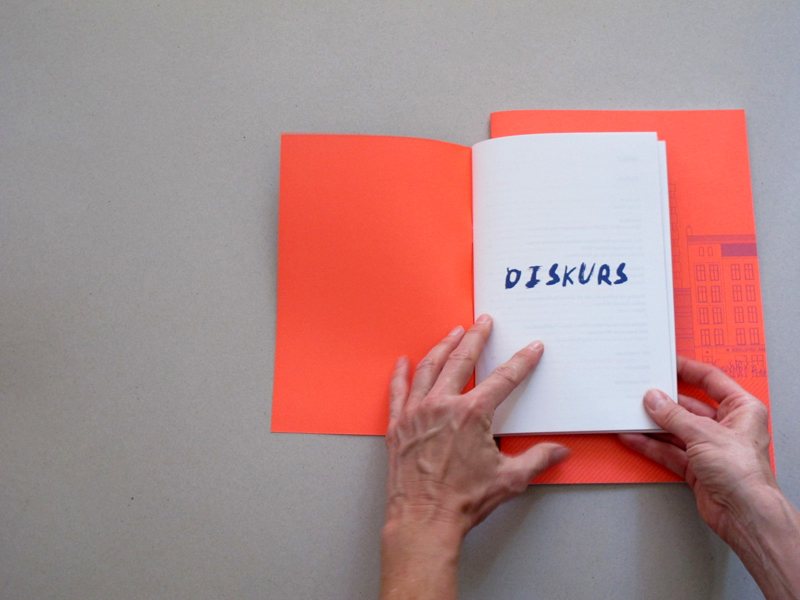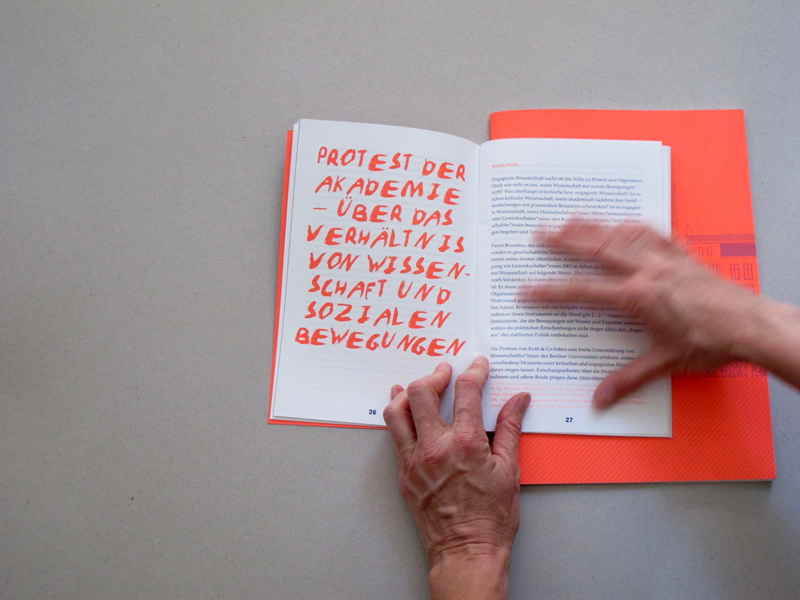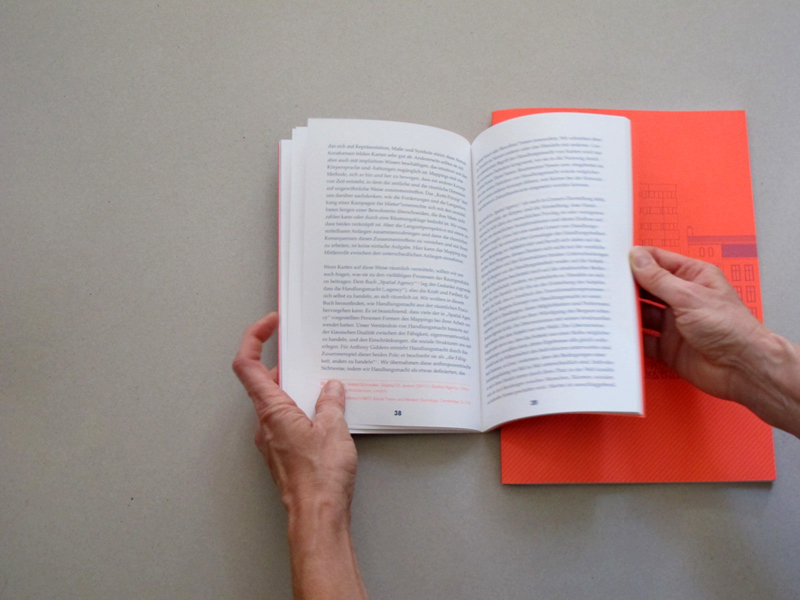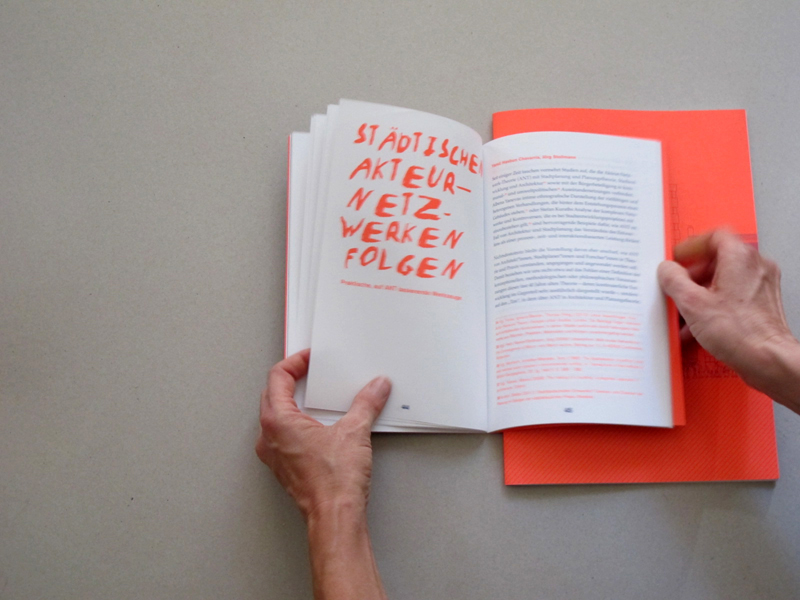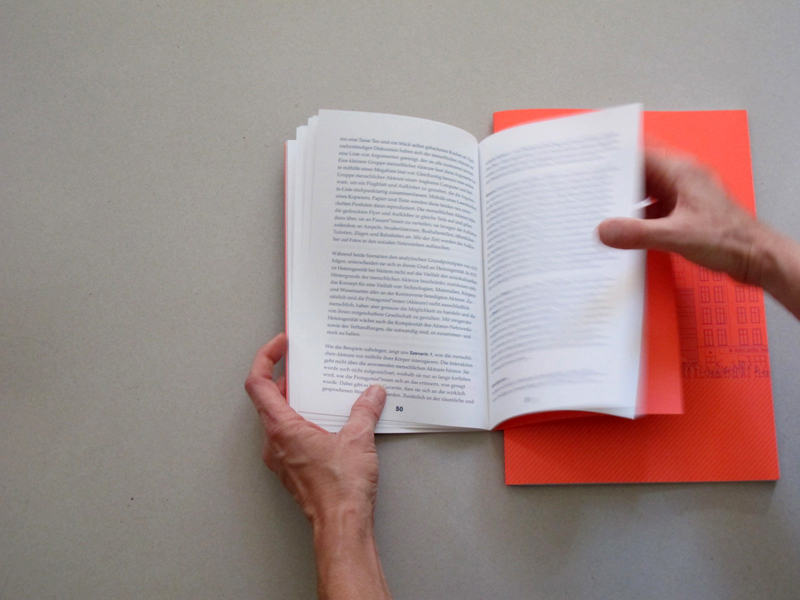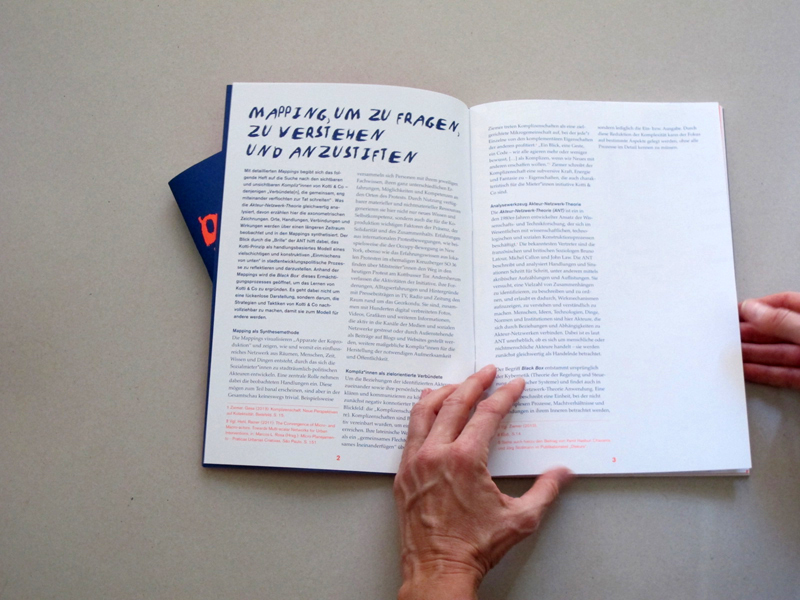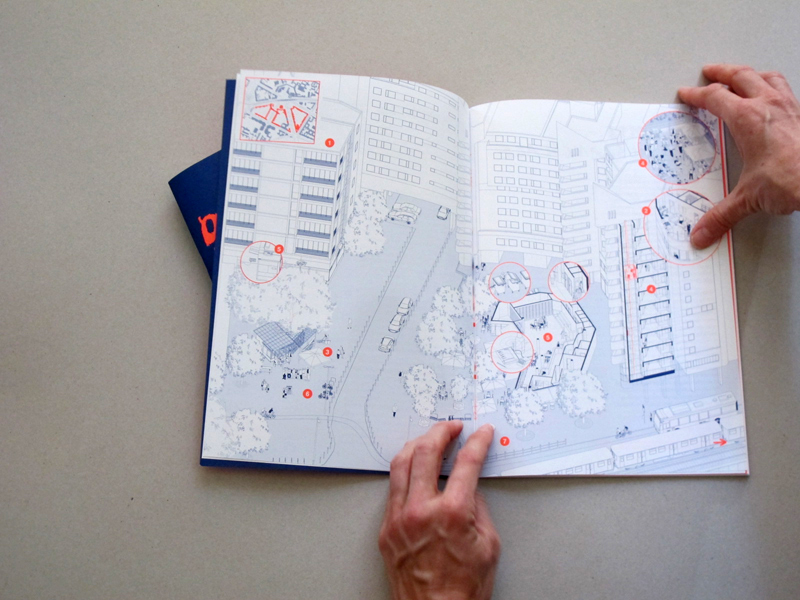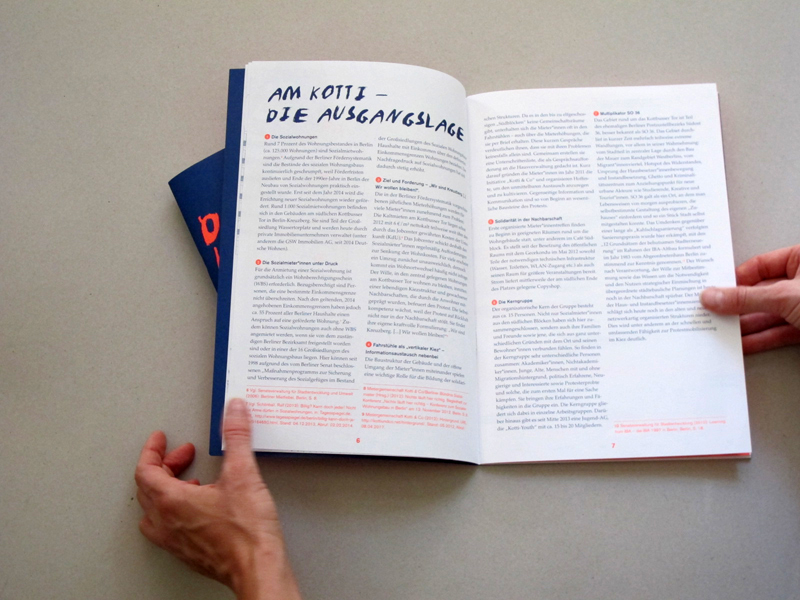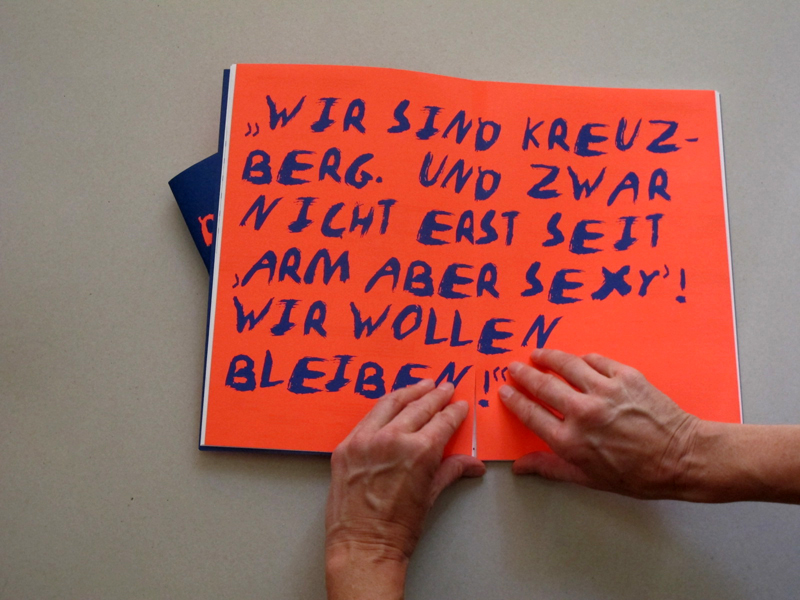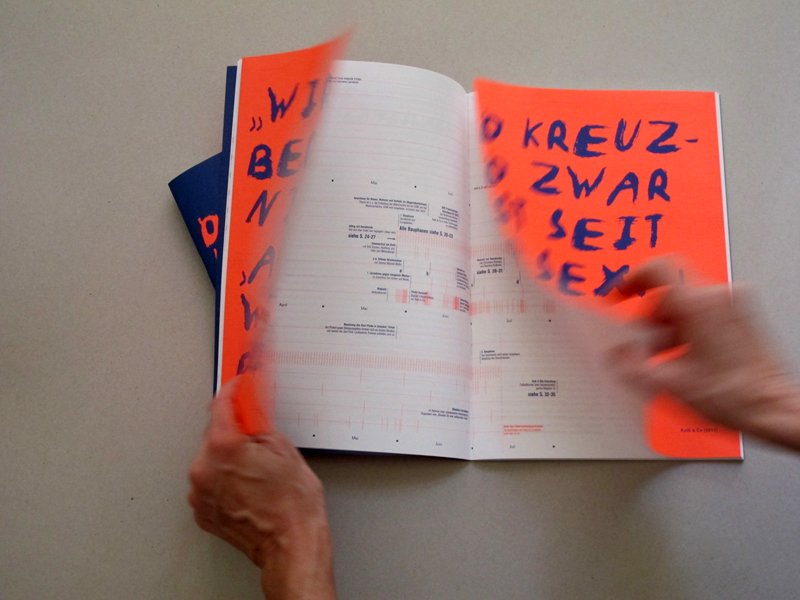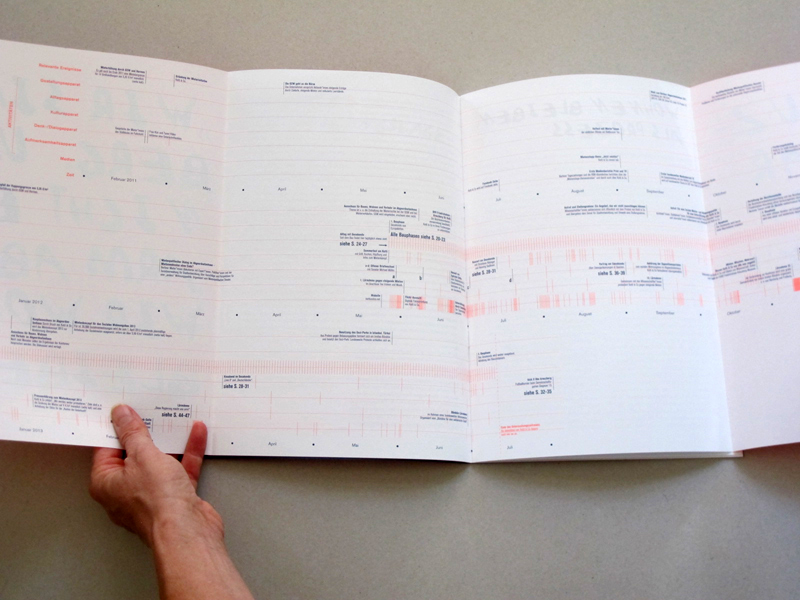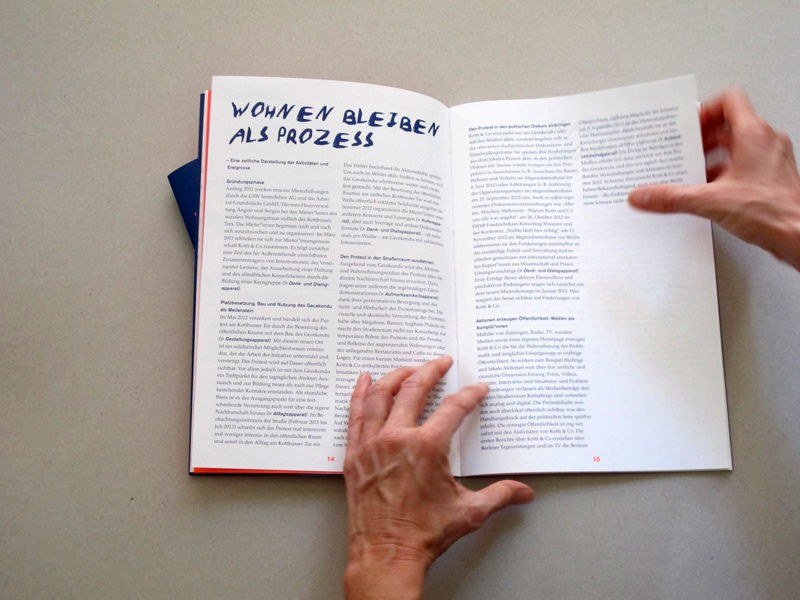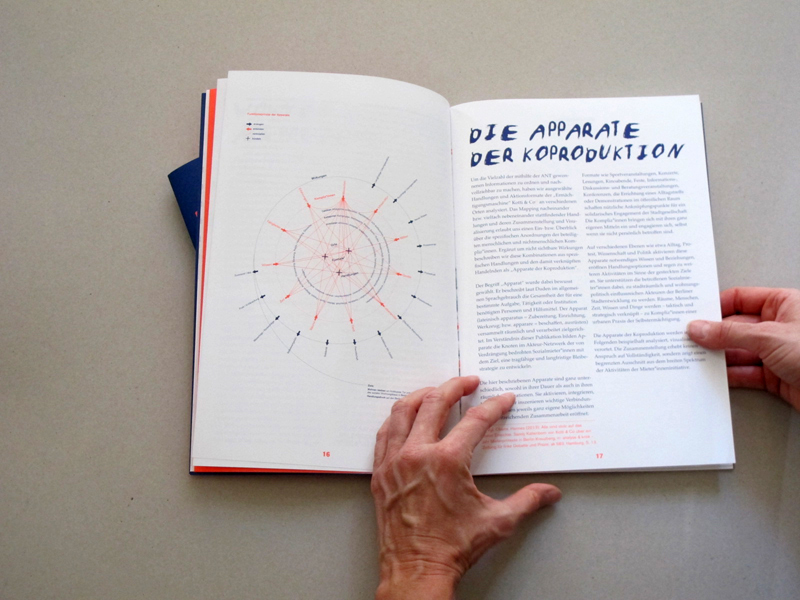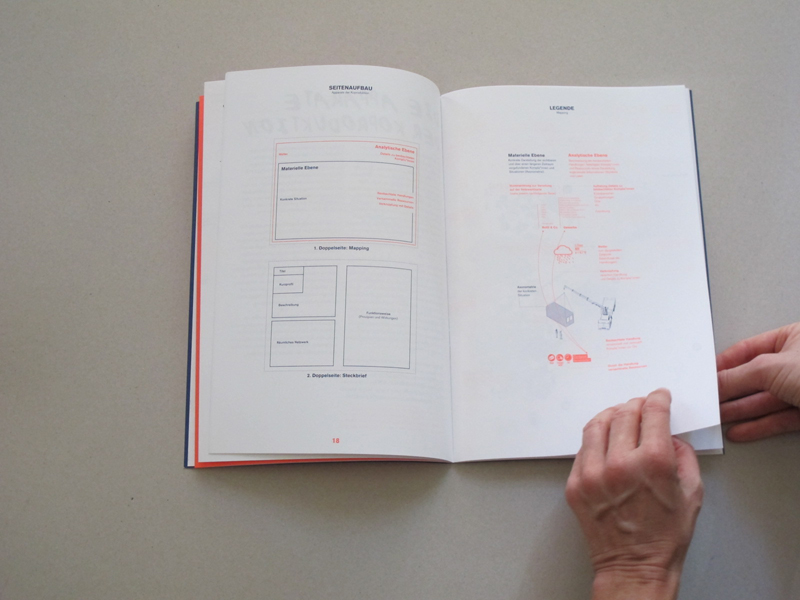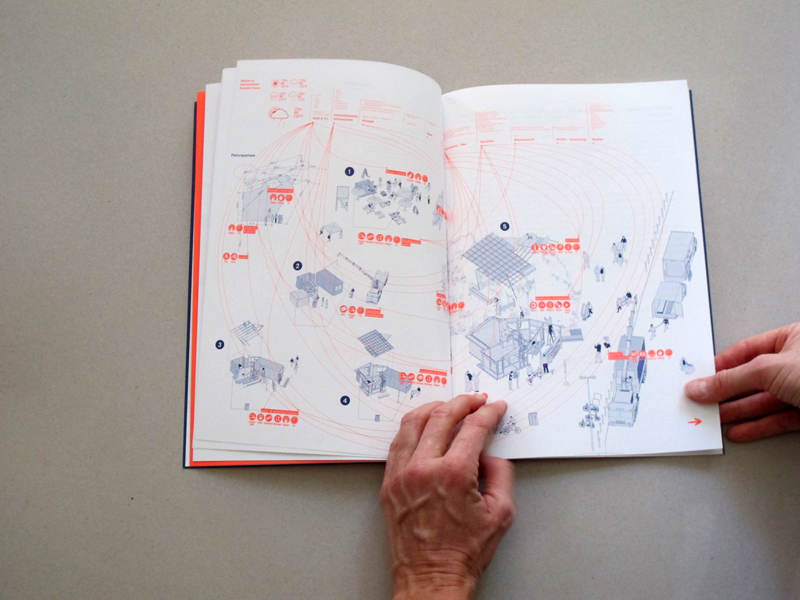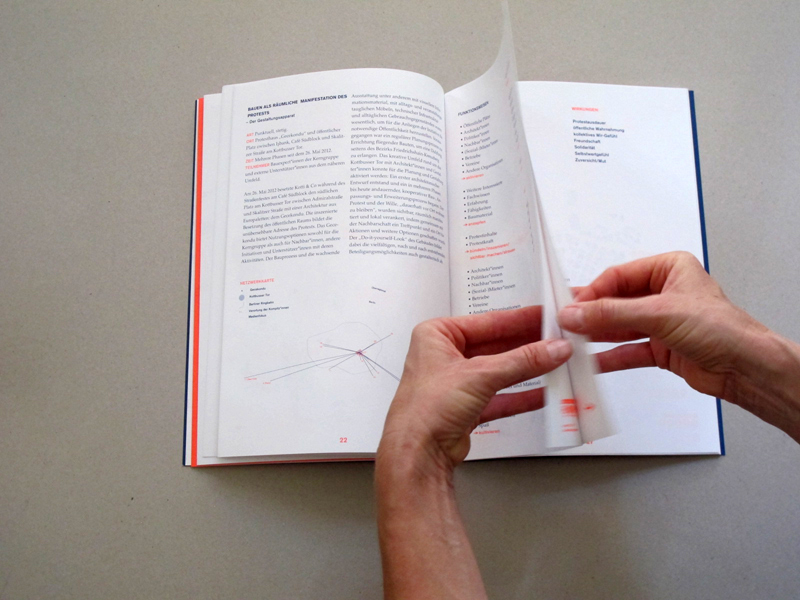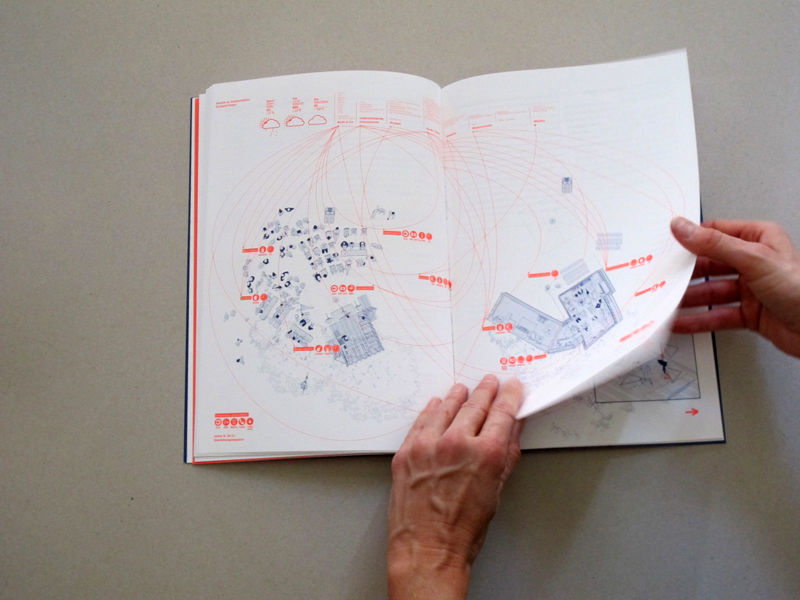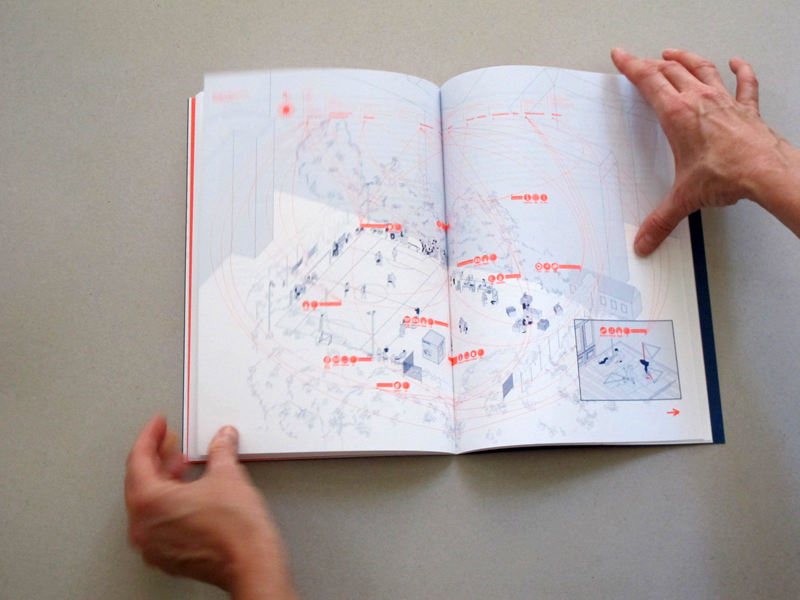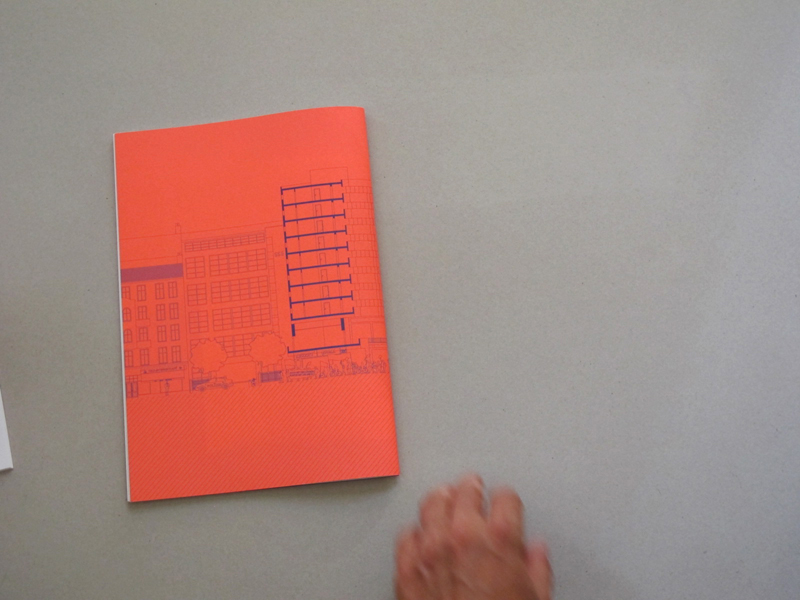Das Kotti-Prinzip
Urbane Komplizenschaften zwischen Räumen, Menschen, Zeit, Wissen und Dingen
18,00 €
- Christine Bock, Ulrich Pappenberger, Jörg Stollmann (Hrsg.)
- Deutsch
- Published in: 2018
- 112 pages
- 290 x 200 mm
- ISBN: 978-3-944074-25-2
(scroll down for English and images)
Wem gehört die Stadt? Wer darf wohnen – wer muss gehen? Wer entscheidet darüber? Und mit welchen Mitteln? Ein halbes Jahr lang begleiteten Christine Bock und Ulrich Pappenberger die Mieter*inneninitiative Kotti & Co um zu verstehen, wie Sozialmieter*innen zu einflussreichen Akteuren der Berliner Stadt- und Wohnungspolitik wurden. Die Studie folgt der Akteur-Netzwerk-Theorie und erzählt von der Macht des Kollektivs. Sie beleuchtet anhand von Mappings, wie sich Räume, Menschen, Zeit, Wissen und Dinge zu Kompliz*innen eines wirkungsvollen Akteur-Netzwerk verbinden.
Das Kotti-Prinzip versammelt zudem Beiträge über die Beziehungen von Wissenschaft und Praxis und die Handlungsmacht, die aus der Kollaboration von Forscher*innen, Gestalter*innen und Aktivist*innen entstehen kann. Die Publikation möchte zur Reflexion anregen, welche Beiträge kritische Raumpraktiken zu Stadtpolitik und -entwicklung leisten. Und vor allem will sie dazu ermutigen, selbst aktiv zu werden, denn „klein sein heißt unverbunden sein, groß sein heißt verbunden sein.“ (Bruno Latour)
Die Publikation besteht aus 2 Teilen: Ein großformatiges Heft mit doppelseitigen axonometrischen Zeichnungen stellt die sichtbaren und unsichtbaren Kompliz*innen von Kotti & Co vor. Die anschaulichen Übersichten zeigen, wie Akteure, Orte und Handlungen über längere Zeiträume zusammenwirken und wie vielschichtig sich das „Einmischen von unten“ in stadtentwicklungspolitische Prozesse gestaltet. Es geht darum, die Strategien und Taktiken von Kotti & Co nachvollziehbar zu machen, damit sie zum Modell für andere werden. Ergänzt wird diese visuelle Analyse durch einen Textband, der in einer Reihe von Essays Handlungsmöglichkeiten im Spannungsfeld von zivilgesellschaftlichem und akademischem Engagement beleuchtet.
Mit Beiträgen von Nishat Awan, Christine Bock, Ulrike Hamann, Yamil Hasbun Chavarría, Andrej Holm, Sandy Kaltenborn, Ulrich Pappenberger, Jörg Stollmann.
Who owns the city? Who is allowed to stay – who has to go? Who decides about it? And by what means? For about six months, Christine Bock and Ulrich Pappenberger accompanied the tenant initiative Kotti & Co to understand how tenants had become influential actors affecting Berlin’s city and housing politics. The study employs an actor-network theory approach in order to talk about the power of the collective. By means of mappings, it sheds light on how spaces, people, time, knowledge and things connect as accomplices of an effective actor-network. The Kotti-principle assembles contributions on the relationship of science and practice and especially on the agency that is gained by the collaboration of researchers, designers, and activists. The publication aims to encourage reflecting on the contributions of critical spatial practices to urban politics and development. And above all, it wants to encourage to engage, because “the small is being unconnected, the big one is to be attached.” (Bruno Latour)
The publication consists of 2 parts: A large-format booklet with axonometric drawings introduces the visible and invisible accomplices of Kotti & Co. The detailed mappings show how actors, places and actions work together over long periods of time and how complex “interfering from below” is in urban development policy processes. It’s about making the strategies and tactics of Kotti & Co understandable so that they can become a model for others. This visual analysis is supplemented by a smaller booklet containing a series of essays, that shed light on the power of civil society and academic engagement for urban development.
With contributions from: Nishat Awan, Christine Bock, Ulrike Hamann, Yamil Hasbun Chavarría, Andrej Holm, Sandy Kaltenborn, Ulrich Pappenberger, Jörg Stollmann.
This publication is licensed under CC BY NC SA and available in the repsitory of the TU Berlin. DOI: 10.14279/depositonce-7472



